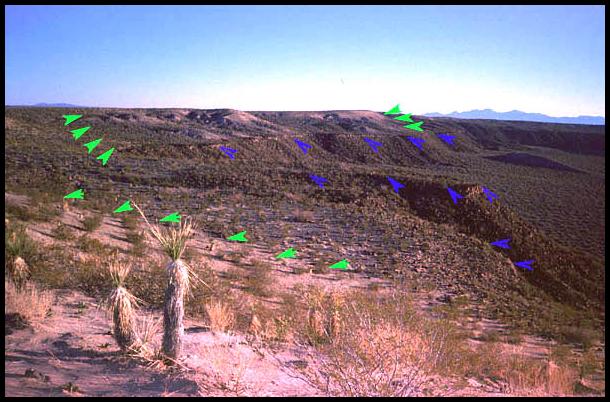|
So where the heck is the olivine? Well, most of it is not in the bottom of the hole (If it is, it is burried under a whole lot of sand and sediment). Hike to the edge of the crater (the blue arrows in the above image) and you will be standing on a flat, black layer of "frozen" lava called the Afton basalt. This basalt flow was present before the Kilbourne maar formed. When the explosion took place, chunks of basalt and olivine were thrown high in the air and ejected out of the crater. A layer of ash, basalt chunks, and olivine nodules or "bombs' landed on top of the Afton basalt layer, and formed a rim around the hole. The grayish rim surrounding much of Kilbourne Hole is the volcanic ejecta from which olivine nodules weather (portions are noted by the green arrows in the above image). That is where you want to look for the olivine "bombs" and gem peridot.
|
|

